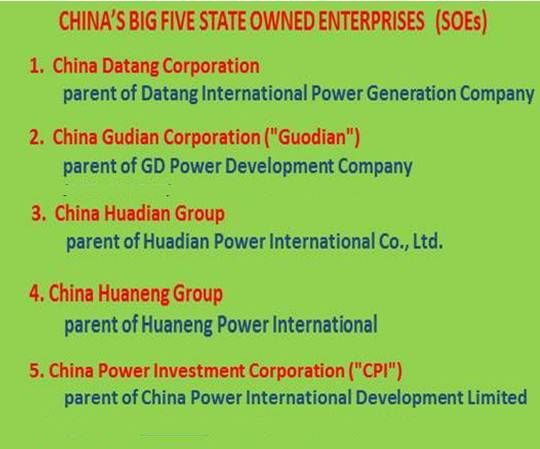First Solar (NSDQ: FSLR) has no projects built or under construction in China. That is significant because the company signed a memorandum of understanding with the Chinese government to build a two-gigawatt PV solar power plant in Ordos City, Inner Mongolia in late 2009.
The plan was to develop a 30-megawatt first phase as a demonstration project while developing manufacturing capability and a supply chain. Construction was scheduled for June 1, 2010. Phases two (100 megawatts) and three (870 megawatts) would follow by 2014. The last gigawatt would come by 2019.
With GTM Research forecasting 5.5 gigawatts of new solar capacity to be built in China in 2012, the market looks tempting. There is a national goal to build 40 gigawatts of solar capacity by 2020. And there are feed-in tariffs, for which First Solar said its Inner Mongolia project qualifies.
Despite its financial travails since 2009, First Solar has by no means given up the dream of taking its price-competitive cadmium telluride thin-film PV technology to China. It recently added Asia energy veteran Bruce Yung as Managing Director and Vice President of Business Development for China. But, realistically, can a U.S. developer do business in China?
The Inner Mongolia project,” wrote GTM Research Solar Market Analyst Scott Burger, “does serve as a good example for American companies' ability to succeed in the Chinese market.”
The problem begins with the Chinese solar module manufacturing industry’s severe overcapacity.
“There are companies in China with extremely bad debt problems and they are happy to sell panels very cheaply just to get some cash flow in. Pricing in China is extremely aggressive. It is the some of the lowest in the world, if not the lowest in the world,” Burger said. Tier one companies like Suntech (NYSE:STP) and Yingli (NYSE:YGE) are working with established EPCs and making projects happen, Burger said.
But smaller companies are scrambling for a piece of the action. Burger believes China may build as much as seven gigawatts of capacity this year. The problem is at State Grid, China’s main transmission system operator.
“The grid is flooded,” Burger said. “State Grid has pushed back quite a bit. From what we have heard, potentially less than 50 percent of the projects being constructed in China will be grid-connected.”
Chinese developers are taking advantage of very low prices, Burger said, “and putting projects in the ground without proper permits and without following the rules. Then they are going in afterwards and requesting grid interconnection and feed-in tariffs.”
A GTM Research partner in China, Burger said, calls them "wildcatters." "They are just going out and wildcatting for solar," he explained.
“It is hard to say whether or not they will eventually get grid-connected,” Burger said. “My guess is the ones that follow the proper procedures will.”
There is another factor, Burger noted. “Having connections to the right person in the local Chinese government can make the difference between your project sitting in the ground unconnected and your project actually generating revenues.”
Even if they don’t, Burger said, “you have small solar manufacturing companies that are happy because at least their production lines are moving.”
Tier one companies aren’t getting involved in the wildcat projects, Burger said. “They want to be guaranteed they will get paid.”
"They work with bankable EPCs and all of the construction is being done by the Big Five Chinese power companies. They are state-owned enterprises (SOEs).”
The Big Five SOEs are China Datang Corporation (HKG: 1798), China Guodian Corporation (HKG: 1296), China Huadian Group, China Huaneng Group (NYSE:HNP), and China Power Investment Corporation (HK: 2380).

“Most of the project development is being done by SOEs,” Burger said, “and the only way to get anything done is to have strong connections to the government.”
A GTM source in China who asked not to be named said it is unlikely First Solar’s original ambition will be realized in the foreseeable future. But the government might allow the company a smaller “face-saving” undertaking if it can learn how to “conduct business in a less structured, more flexible, incentivized environment.” China welcomes innovation, the source said, if it makes use of Chinese manufacturing resources cost effectively.
If Western players are going to get a foothold in China, Burger believes, they need a strong relationship with a Chinese company. But with so many Chinese solar manufacturers in such dire straits, Burger said, “there is no real incentive for any of these SOEs to work with foreign companies.”
That is undoubtedly why First Solar partnered with the China Guangdong Nuclear Power Group solar energy development company, why it has announced it will be working with China Power New Energy Development, and why it hired Yung.
“They are trying to set up those government connections,” Burger said of First Solar. “They are a cost-competitive company. It is hard to say whether they can compete with some of the Chinese companies that are literally willing to sell at almost any cost. I imagine there is potential for them to do business in China just because they are trying very hard to do so. But it is going to take a big investment and they have to have a local partner. And you have to be willing to sell for a very low price.”



